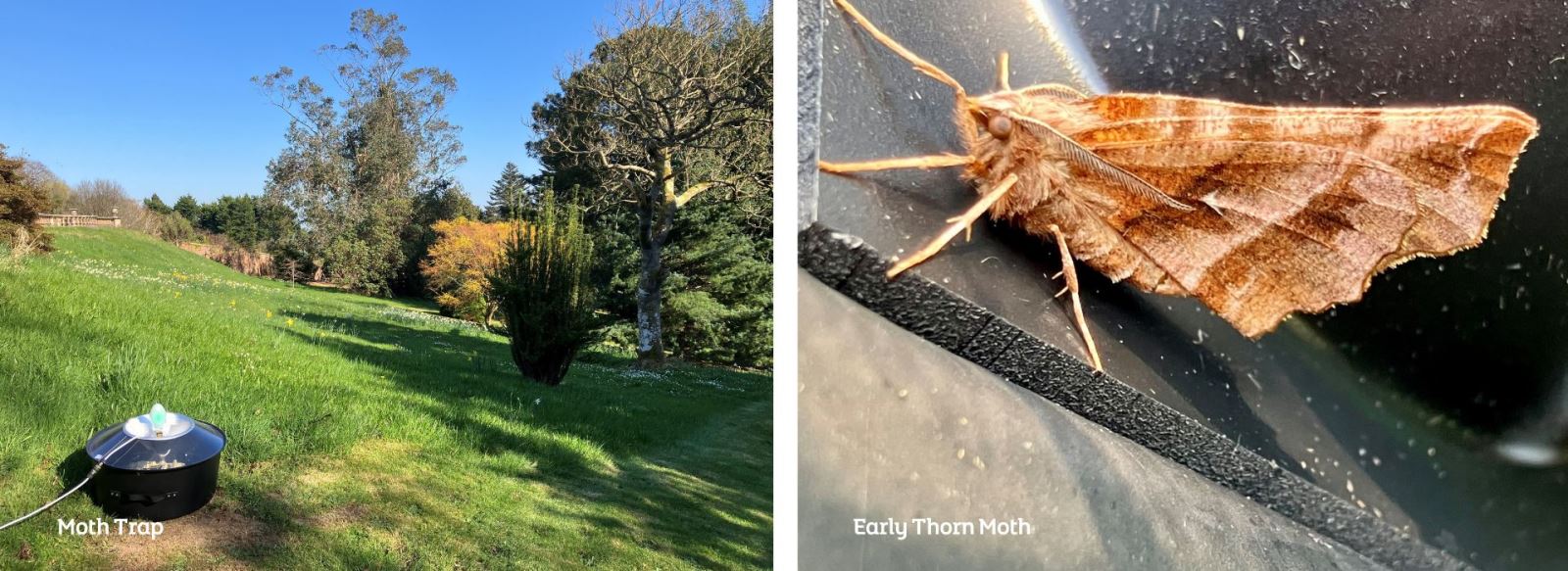Tucked within the serene beauty of Castlewellan Forest Park, a quiet yet important project is unfolding under the evening skies. Each week, in the heart of the Annesley Walled Gardens, Education and Biodiversity Officer Ben Ryan sets up a moth trap—continuing the invaluable work begun by his predecessor, Amy Dixon. This ongoing survey is more than just a scientific endeavour; it’s a window into the hidden world of nocturnal pollinators and an essential part of monitoring biodiversity in the park.

Using a specialised Mercury Vapour light trap, the process is as gentle as it is effective. At dusk, moths are drawn to the glow of the light and guided safely into a dome-shaped container. Inside, egg boxes offer a safe and dark place to rest until morning. At first light, Ben carefully identifies each moth before releasing them back into the wild—minimising disturbance while maximising data collection.
Seasonal changes bring shifts in moth activity. In recent weeks, early spring species have made their presence known, with notable numbers of Common Quakers, Hebrew Characters, and Early Greys. A particularly exciting find was an Early Thorn—a delicate and beautifully patterned species that always stands out during survey mornings.
.jpg)
Though often overlooked in favour of their daytime cousins, moths are unsung heroes of our ecosystems. These nocturnal insects play a vital role in pollination, helping many plants reproduce after dark. They are also key indicator species—providing scientists with valuable insights into the health of local environments and the effects of climate change.
The weekly moth trapping project at Castlewellan doesn’t just benefit research—it also fosters awareness and appreciation. You don’t need special equipment to get involved. Next time you're in your garden, out for a walk, or simply near a streetlight, pause and observe the moths around you. Each one is part of a bigger story about nature’s complexity and resilience.
By noticing and nurturing these often-unseen creatures, we take a small but meaningful step toward protecting biodiversity—not just in Castlewellan, but everywhere.










